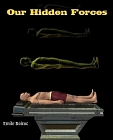
LEGENDS OF BABYLON and EGYPT IN RELATION TO HEBREW TRADITION

Description
OF
BABYLON & EGYPT
(1911)
IN RELATION TO HEBREW TRADITION
by LEONARD W. KING, M.A., LITT.D., F.S.A.
Assistant Keeper of Egyptian and Assyrian Antiquities
in the British Museum Professor in the
University of London King's College
The bulk of our new material is furnished by some early texts, written towards the close of the third millennium B.C. They incorporate traditions which extend in unbroken outline from their own period into the remote ages of the past, and claim to trace the history of man back to his creation. They represent the early national traditions of the Sumerian people, who preceded the Semites as the ruling race in Babylonia; and incidentally they necessitate a revision of current views with regard to the cradle of Babylonian civilization.
Though the resemblance of early Sumerian tradition to that of the Hebrews is striking, it furnishes a still closer parallel to the summaries preserved from the history of Berossus. The huge figures incorporated in the latter's chronological scheme are no longer to be treated as a product of Neo-Babylonian speculation; they reappear in their original surroundings in another of these early documents, the Sumerian Dynastic List. The sources of Berossus had inevitably been semitized by Babylon; but two of his three Antediluvian cities find their place among the five of primitive Sumerian belief, and two of his ten Antediluvian kings rejoin their Sumerian prototypes.
Sumerians looked back to a time when gods lived upon the earth with men, and we have seen such deities as Tammuz and Lugalbanda figuring as rulers of cities in the dynastic sequence. As in later periods, their names are there preceded by the determinative for divinity. But more significant still is the fact that we read of two Sumerian heroes, also rulers of cities, who were divine on the father's or mother's side but not on both. Meskingasher is entered in the list as "son of the Sun-god" , and no divine parentage is recorded on the mother's side. On the other hand, the human father of Gilgamesh is described as the high priest of Kullab, and we know from other sources that his mother was the goddess Ninsun . That this is not a fanciful interpretation is proved by a passage in the Gilgamesh Epic itself , in which its hero is described as two-thirds god and one-third man. We again find ourselves back in the same stratum of tradition with which the Hebrew narratives have made us so familiar.
Excerpt from the Preface:
Moreover, the recorded ages of Sumerian and Hebrew patriarchs are strangely alike. It may be added that in Egypt a new fragment of the Palermo Stele has enabled us to verify, by a very similar comparison, the accuracy of Manetho's sources for his prehistoric period, while at the same time it demonstrates the way in which possible inaccuracies in his system, deduced from independent evidence, may have arisen in remote antiquity. It is clear that both Hebrew and Hellenistic traditions were modelled on very early lines.

It is a tribute to the historical accuracy of Hebrew tradition to recognize that it never represented Palestine as the cradle of the human race. It looked to the East rather than to the South for evidence of man's earliest history and first progress in the arts of life. And it is in the East, in the soil of Babylonia, that we may legitimately seek material in which to verify the sources of that traditional belief.
The new parallels I have to-day attempted to trace between some of the Hebrew traditions, preserved in Gen. iv-vi, and those of the early Sumerians, as presented by their great Dynastic List, are essentially general in character and do not apply to details of narrative or to proper names. If they stood alone, we should still have to consider whether they are such as to suggest cultural influence or independent origin.
Paperback, 5 x 8, 200+ pages (270 Footnotes)















